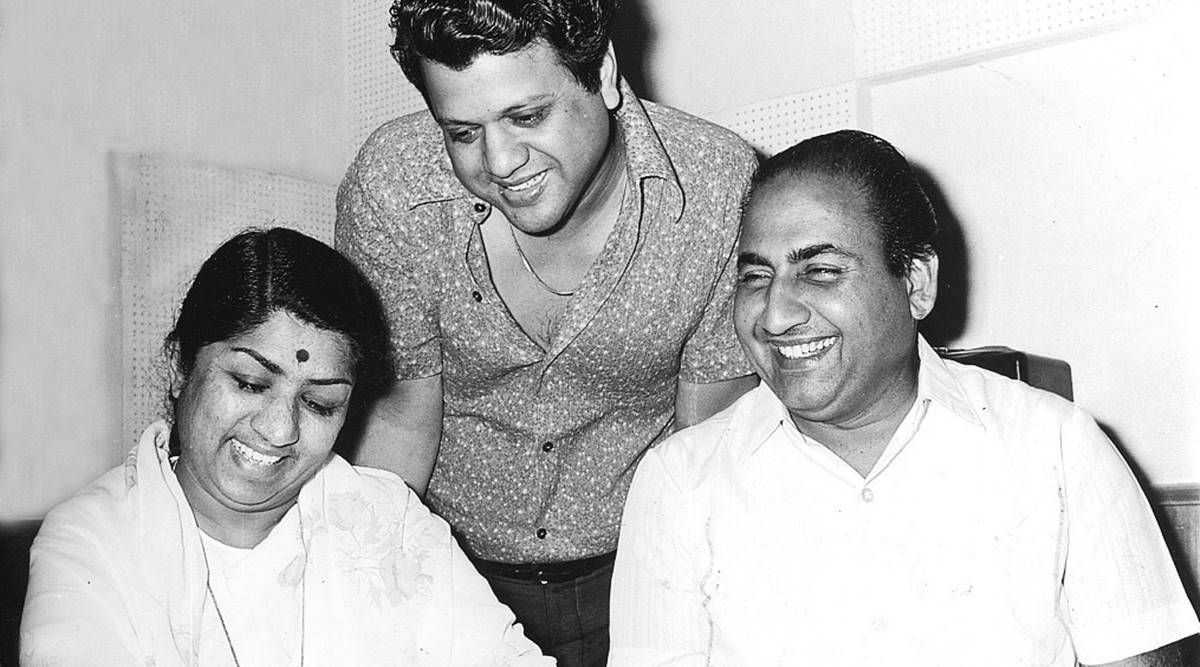 Mangeshkar with Jaikishan and Rafi (Express archive photo)
Mangeshkar with Jaikishan and Rafi (Express archive photo) If you consider a note to be a circle, then Lata Mangeshkar would hit the shruti (micronote) at the centre of it — every note came with so much perfection. In my conversations with Hindustani classical legend Kumar Gandharva, he would say, “Gaane sunne hain toh Lata ke suno, aur wahan se seekho.”
She was someone who reached the art form’s pinnacle, showcasing the greatness it was capable of. She made the complex process seem so effortless that music reached every household in the subcontinent.
She started under the influence of icons such as Noor Jehan and Shamshad Begum, with songs in Mahal (1949) and Andaz (1949), which is why one hears her singing in a nasal tone, but slowly as she found her own voice, different facets started to unfold. The musical octave where she would take the heroine’s voice in the most ordinary manner, was exemplary. Otherwise, the way the actors spoke and the way they sang sounded different. Lataji’s voice matched that speaking voice and that’s something that influenced generations at large. People have always said that Asha (Bhosle) was the vamp’s voice but Lata, too, came with those variations. She also sang in so many languages.
She was criticised for asking for the singer’s share of royalty and had a tiff with (Mohammed) Rafi sahab over the same but she was ruling the industry at the time and knew her rights.
There are so many songs, such a massive oeuvre that she leaves us with, but one that I’ll always remember is Allah tero naam, ishwar tero naam. It’s not just a bhajan, it’s a lesson for life. There is no other way that it could have been sung. Every song from her is a teaching school. If you can replicate even one song with as much purity, you would have learned a lot of music.
(As told to Suanshu Khurana)
- The Indian Express website has been rated GREEN for its credibility and trustworthiness by Newsguard, a global service that rates news sources for their journalistic standards.

